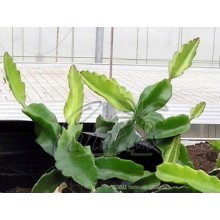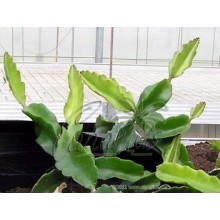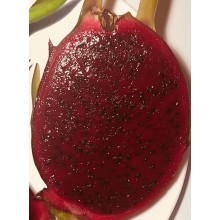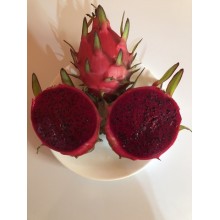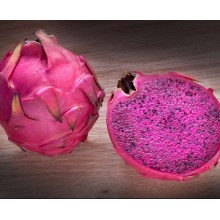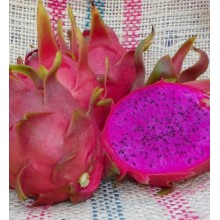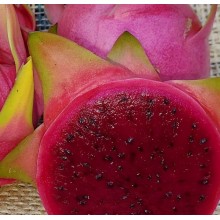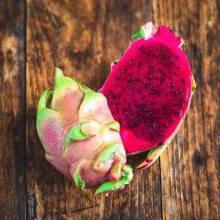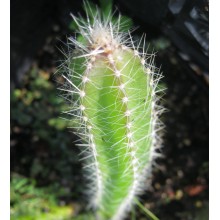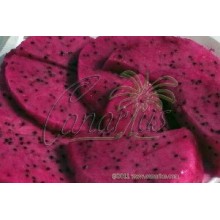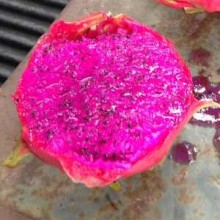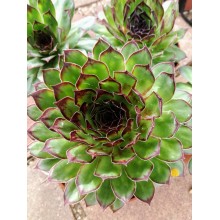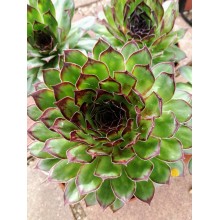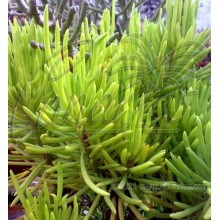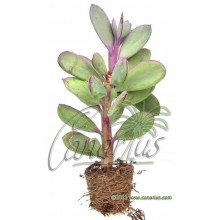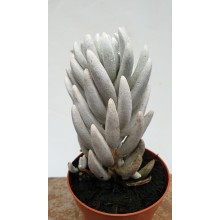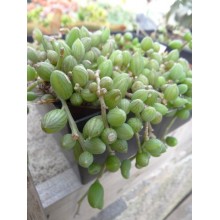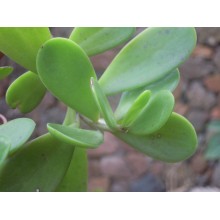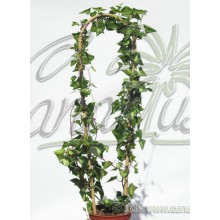Tutte le piante Ci sono 1882 prodotti.

Se vi piacciono le piante esotiche, allora sei nel posto giusto. Canarius offre le piante esotiche difficile da trovare che sono raramente disponibili in centri di giardinaggio. Il nostro negozio ha specie naturali e rari ibridi. Offriamo piante esotiche provenienti dalle Isole Canarie.
Gli ordini sono inviati a ovunque in Europa e anche in tutto il mondo. I pacchi raggiungeranno la vostra casa in pochi giorni dopo la spedizione (ma abbiamo bisogno anche alcuni giorni per l'elaborazione). Non esitate a contattarci se avete domande.
Sotto-categorie
-
Succulente
I deserti del mondo e le zone secche ospitano le piante più interessanti. Canarius offre una selezione crescente di piante succulente di massima qualità, perché sono coltivate all'aperto, in pieno sole delle Isole Canarie.
I succulente o "piante grasse" sono specie di ritenzione di acqua, adattate alle condizioni di asciutto. Loro accumulano succum (succo, acqua) nelle loro foglie, steli o radici, e spesso mostrano un aspetto robusto e carnoso.
-
Esotiche
Le piante esotiche sono specie provenienti da altre parti del mondo, e di solito hanno le qualità ornamentali: una vegetazione lussureggiante, fiori colorati, forme insolite... Qui è possibile trovare una grande varietà di piante esotiche: da bromeliacee e Heliconias, fino a palme e piante d'appartamento.
Le piante esotiche non hanno un uso particolare. I collettori acquistano questo tipo di piante per la loro rarità, per la decorazione interna o esterna, a seconda delle loro caratteristiche.
-
Da frutto & Per la salute
Le piante da frutto, erbe e piante medicinale sono concentrati su come ottenere una salute migliore. In questo contenuto della sezione, ogni tipo di pianta produce effetti salutari, entrambi alberi da frutto (Feijoa, Ananas, Fina Jete...) e piante per la salute, come Graviola, Aloe vera, Callisia fragrans... Nel normale metabolismo di tutti gli esseri viventi, l'organismo produce delle sostanze nutritive da latenti per l'ambiente; alcune di queste sostanze chimiche sono parte del processo in tutte le specie. Normalmente, i composti utili sono concentrati in alcune dei sue parti: foglie, semi, fiori...
-
Speciale
Su canarius.com cerchiamo di rimuovere i limiti nel campo della botanica. Sul nostro negozio online cerchiamo di facilitare l'acquisto / vendita di piante di tutto il mondo. Per questo motivo, coltiviamo piante di tutto il mondo, specie più comuni ed anche piante più particolari, come si può vedere in questa sezione.
-
Selenicereus 'Hybridum' - Pitahaya
Selenicereus 'Hybridum' - Pitahaya
One of the best selection, imported from Reunion island. It bears round fruits with red flesh.
21,70 € -
Selenicereus 'JC03' - Pitahaya
Selenicereus 'JC03' - Pitahaya
Rooted cutting of 20-25 cm. A good pollinator Hylocereus used by cultivators of Reunión Island for H. undatus, H. purpusii e H. hybrids. The taste of the fruits is not the best but it is still nice to eat.
23,00 € -
Selenicereus 'JC05' - Pitahaya
Selenicereus 'JC05' - Pitahaya
We offer a rooted cutting of 20-25 cm
21,70 € -
Selenicereus 'Sin Espinas'
Selenicereus 'Sin Espinas'
This thornless variety comes from the genus Hylocereus and an unknown species native to Nicaragua. The fruits average size is a pound with thick pink skin with green fins and it has deep red flesh. The most interesting aspect of this variety is its lack of spins.Rooted cutting of 20-25 cm.
21,70 € -
Selenicereus costaricensis - Costa Rican Dragon Fruit
Selenicereus costaricensis - Costa Rican Dragon Fruit
Wild dragonfruit with red, sweet and tasty fruits. It grows wild in central america in dry forests. This is the ancestor of many modern hybrids and to many conoisseurs it is still the tastiest, and the "real thing". Its fruits are all-red, especially rich in healthy indicaxanthin anti-oxidants.
28,50 € -
Selenicereus purpusii - Pitahaya, Purple Dragon Fruit
Selenicereus purpusii - Pitahaya, Purple Dragon Fruit
20-25 cm Rooted cutting. A climbing cactus with excellent fruits, with purple skin and flesh. It is a very good pollinator for the other ones. It needs a pollinator, and the best is H. undatus. VISIT OUR SECTION OF FRUIT TREES A-Z AND FIND MANY MORE HYLOCEREUS
21,70 € -
Selenicereus undatus 'Condor'
Selenicereus undatus 'Condor'
"Self-pollinating" cultivar with large oval shaped fruit up to 700g in weight, with a skin which is at first light green with pinkish shades which darken to pinkish red as the fruit ripens. The flesh is dark purple colour with many small dark edible seeds. The taste of this variety is described as very peculiar and pleasant to the palate.
21,70 € -
Sempervivum calcareus
Sempervivum calcareus
Native to Southern Eruope from about 200 to 2800 m, it has neat stolinferous rosettes with a red hue, and ciliate ("Hairy") leaf margins. It naturally grows in rocky outcrops and cliffs, but it became well known in ancient times since it was typically found on roofs, hence the name "tectorum", meaning "of the roofs"
10,70 € -
Sempervivum tectorum
Sempervivum tectorum
Native to Southern Eruope from about 200 to 2800 m, it has neat stolinferous rosettes with a red hue, and ciliate ("Hairy") leaf margins. It naturally grows in rocky outcrops and cliffs, but it became well known in ancient times since it was typically found on roofs, hence the name "tectorum", meaning "of the roofs"
10,70 € -
Senecio barbertonicus
Senecio barbertonicus
Small shrub, Bright green succulent leaves held upright and are crowded toward tips. Orange yellow clusters of flowers appear in late autumn. It is probably the largest species in the group of senecios with cylindrical leaves...
10,80 € -
Senecio crassissimus
Senecio crassissimus
Cont.= 8,5 cm - This species from Madagascar grows as a low shrub. Multiple stems have flattened obovate leaves, glaucous gray with purple margin in strong light. Yellow flowers. Suitable for pots or frost-free gardens.
10,70 € -
Senecio haworthii 'Mont Blanc'
Senecio haworthii 'Mont Blanc'
This all-white wooly Senecio is native to the Little Karroo of South Africa. It is easy to grow and makes a nice small shrub with vertical branches. Senecio haworthii is renown for its cold hardiness as it takes short frosts to -6 C. 'Mont Blanc' is a select clone which is a stouter and whiter than the typical species.
10,20 € -
Senecio jacobsenii
Senecio jacobsenii
Creeping Senecio from E Africa with glossy leaves. It can be used in baskets or as a ground cover. It is called in English Trailing Jade Plant.
10,40 € -
Senecio macroglossus variegata
Senecio macroglossus variegata
Cont.= 8,5 cm - This climbing plant is called Flowering Ivy, because its leaves and habit looks like an ivy but it bear daisy-like flowers. It is native to the Eastern coast of South Africa and it is frost sensitive.
10,80 €
Al momento ci sono pochi prodotti in questa categoria Tutte le piante




















